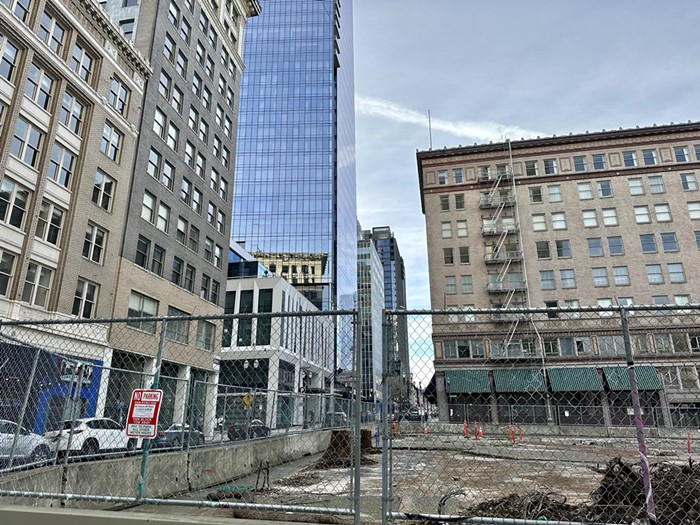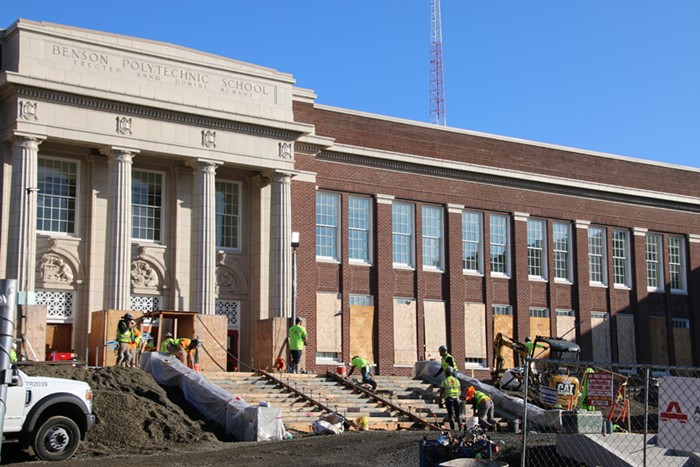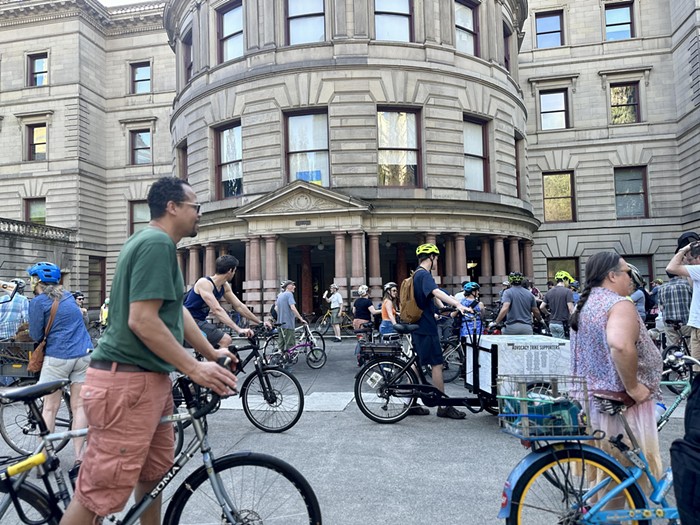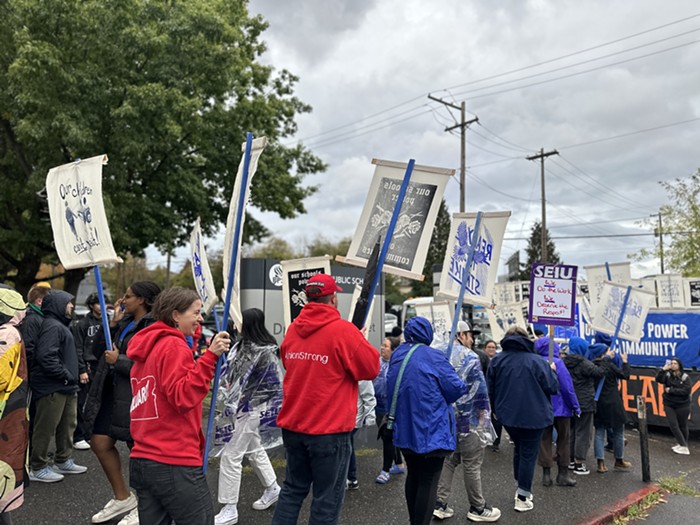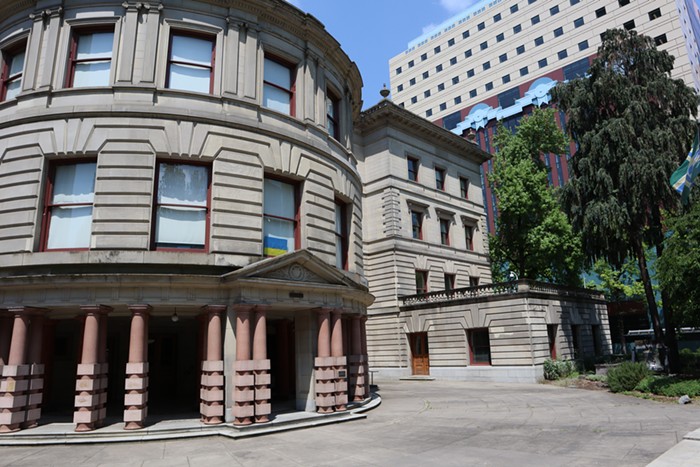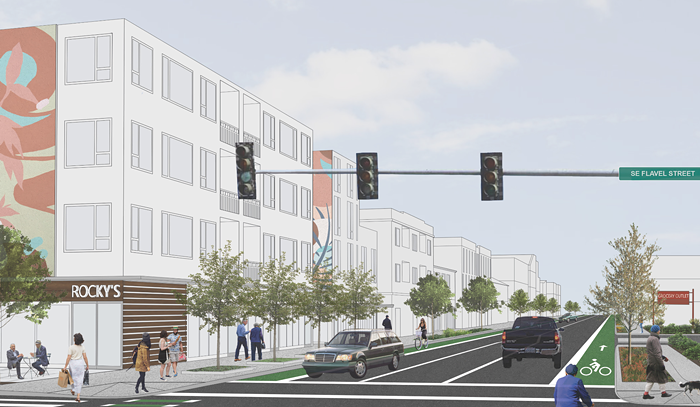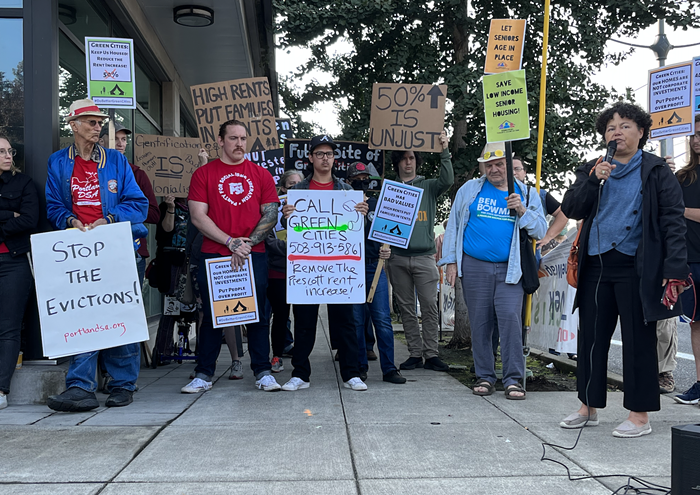COMMISSIONER STEVE Novick and emergency planners let everyone know last fall they'd be pushing harder than usual for safer, earthquake-ready Portland buildings—shoring up, if they could, Portland's weak building codes.
But with Novick closer than ever to getting his way on mandatory seismic retrofits for some of the city's most vulnerable structures—brick apartments and other masonry buildings—a new landlord lobby has begun pushing back with a seemingly simple request: Pay us.
The group calls itself the Heritage Bricker Housing and Jobs Coalition, or "Brickers" for short. The Brickers (they've registered with the state as the Masonry Building Owners of Oregon) represent roughly 25 Portland landlords who collectively own 125 seismically unsound buildings. These are mostly older brick apartments—what engineers call unreinforced masonry buildings, or URMs—and most of them are extremely likely to collapse and kill their occupants in a big earthquake.
The Brickers claim they can't afford the high costs of retrofits—ranging from hundreds of thousands into the millions—without a subsidy.
"People have the perception that everybody who owns an apartment building is filthy rich. A lot of these people owe 75 percent of the value of their buildings to the bank," says Brickers founder Walter McMonies. "A lot of [Brickers] screamed like stuck pigs over the prospect of having to pay."
McMonies says he organized the group soon after the Mercury first reported on Novick's intentions last fall ["Coding for Quakes," News, Oct 16, 2013]. A semi-retired attorney at Lane Powell, McMonies also knows firsthand about the costs involved in retrofitting: He co-owns five Portland apartment buildings, and says he's retrofitted two—one, partially—while he's looking into retrofitting one more.
It's hard to know precisely which buildings might be involved. McMonies declined the Mercury's request to share the Brickers' roster—although he did acknowledge "there are some big boys in there who own 20 to 30 buildings."
Beyond McMonies, state records list the board of directors for the Masonry Building Owners of Oregon as follows: Elizabeth Tilbury from Tilbury Ferguson Investment Real Estate; Jeffrey Reingold from Income Property Management; Steve Rose from Bristol Equities; and Al Solheim from AWS Real Estate.
All but Rose have contributed large checks to current city commissioners, according to state records, with Mayor Charlie Hales the only elected Portland official to receive money from each of the remaining directors. Tilbury and Reingold have also funded campaigns for Commissioner Dan Saltzman. And Solheim has given not only to Hales and Saltzman, but also to Commissioners Nick Fish and Novick.
The Brickers also have enough money to hire a lobbyist to press their case.
They had their coming-out party on June 17 during a city council work session on URMs. Gwenn Baldwin, a seasoned political hand who's worked for Whole Foods and the Metro Multifamily Housing Association, the state's largest landlord lobbying group, joined them that day. (Baldwin did not return calls seeking comment.)
"This is really about a financial barrier system," Baldwin told the council, making the argument that building owners have to eat the cost of retrofits because tenants won't pay higher rents for safety the same way they might for new appliances.
URMs are known killers in big quakes—not just because they collapse, injuring and killing their occupants, but also because they send masonry flying and clog streets.
Since 1995, Portland code has required all URMs to undergo retrofits, provided the buildings meet certain requirements. The problem is many building owners have managed to elude the rules—helped by code changes in 2004 passed at the urging of cost-conscious developers.
According to numbers collected by the Portland Bureau of Development Services (BDS)—which is in charge of enforcing Portland's existing, anemic code—retrofits cost $25 to $75 a square foot. (To put this in perspective, Portland URMs measure anywhere from 5,000 to 30,000-plus square feet.)
Novick, who oversees the Portland Bureau of Emergency Management (PBEM), the lead agency pushing for a new policy, has repeatedly said successful seismic reform requires "carrots as well as sticks." Novick, however, concedes finding the cash could be tricky.
"Ideally what we should be able to do is to make carrots available to everybody," says Novick. "But the logic gets a little mucked up when you have a limited number of incentives to offer."
However, the commissioner's not willing to budge on passing something mandatory.
"Voluntary measures and educational measures have a very spotty record. Things get done when people are required to do them," Novick says.
So what funding ideas are being tossed around?
According to PBEM's director, Carmen Merlo, one option is working more closely with the Portland Development Commission (PDC), which found financing in the past for several Old Town/Chinatown retrofits, including the University of Oregon's White Stag Building. Another is obtaining state financing, which would require new legislation. Merlo says nothing is set in stone yet.
Novick seems to have the mayor's ear on seismic issues. Earlier this year, the commissioner hustled $5.5 million from the PDC's River District for seismic retrofits. Who will get the dough is still up in the air. Unfortunately, these efforts pale next to what needs to be done.
Nearly all Portland buildings—not just URMs—are at risk in the event of a major earthquake. That includes wood-frame houses that aren't attached to their foundations (or have weak foundations), brittle concrete buildings (called non-ductile concrete buildings), and even some of the city's steel-framed high rises (normally pretty resilient, they might have weak welds). But how well any of these buildings will perform is largely conjecture. The truth is we just don't know.
The city's last study on URMs was in the mid-1990s, when building codes finally started reflecting our geology.
The study spotted 1,865 URMs in Portland. However, this analysis was just a "windshield" study, meaning buildings were eyeballed from the street. Their blueprints weren't dug up to verify what, if any, seismic work had been done.
That may change. Merlo says PBEM will be submitting a funding request so she can pay a researcher to plod through records and see what's actually been retrofitted.
(Ironically, probably the best sense of how many people live in URMs comes from McMonies, who tallied up the old city numbers in his own 2010 assessment, published in the Center for Real Estate Quarterly Journal. According to McMonies, Portland's URMs account for 5,200 apartment units. Collectively he estimates the buildings are worth about $350 million. Yet McMonies' numbers, like the city's, are just educated guesses.)
Novick says he's happy with the response he's getting on the URM issue from the mayor and the rest of council, adding he thinks he now has the backing for a policy with "real teeth." This is a far cry from the last time Portland politicos gathered to address the city's easily circumvented earthquake rules.
In October 2004, city council unanimously amended Portland's seismic code, to make it more favorable to landlords and developers. Prominent developers who complained to council about costly retrofits included Bob Ball, who built the Pearl's luxury Wyatt Apartments, and the late Art DeMuro, who rehabbed Old Town's White Stag Block.
"[The Brickers] think they can't make up the costs with higher rents. So that's a problem for them," says Novick. "On the other hand, having buildings that will fall down and kill people when we have an earthquake is a pretty big problem, too."

